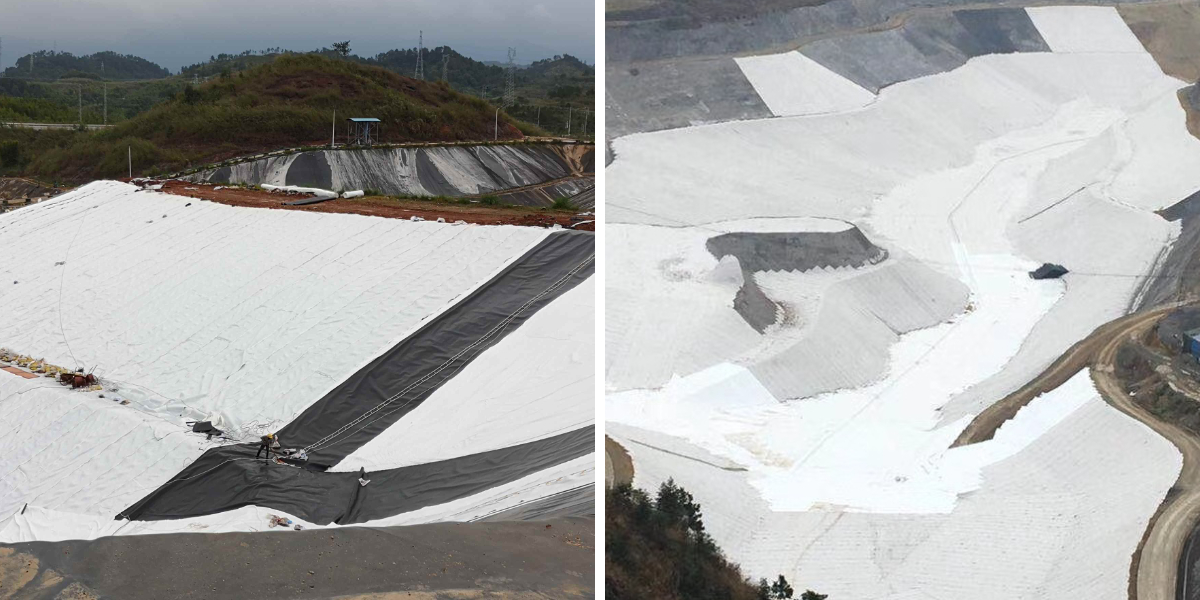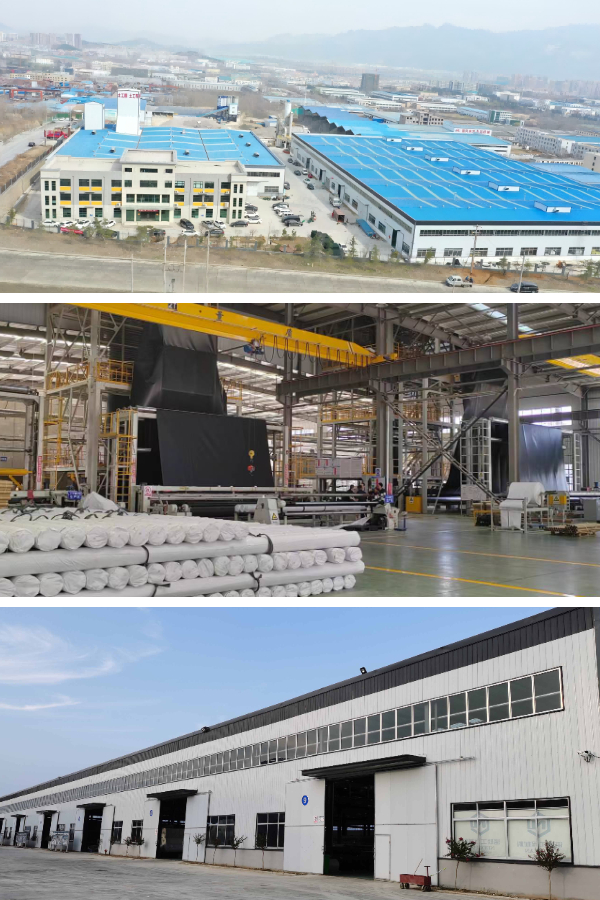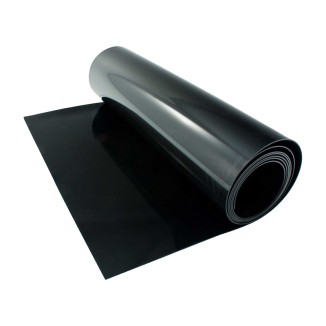The History and Evolution of Geotextile Materials
From historic civilizations the usage of herbal fibers to stabilize soil to cutting-edge development websites relying on high-tech synthetics, geotextile fabric has come a lengthy way. These versatile substances play a integral function in civil engineering, erosion control, and infrastructure development, however their ride spans centuries of innovation. This information traces the records and evolution of geotextile materials, exploring how they’ve converted from easy herbal fabric to engineered options with specialised makes use of like non woven geotextile makes use of and geotextile in street construction. By grasp their past, we obtain perception into why today’s geotextiles are fundamental in present day projects.
Ancient Beginnings: Natural Fibers as Early Geotextiles
The story of geotextiles starts lengthy earlier than the time period “geotextile” was once coined. Ancient civilizations diagnosed the fee of the use of herbal fabric to enhance soil steadiness and manipulate erosion. As early as 3000 BCE, the Egyptians used reeds and papyrus mats to improve the banks of the Nile River, stopping soil erosion all through annual floods. Similarly, the Romans wove straw and wool into mats to line roads and aqueducts, decreasing contract and enhancing durability—an early instance of geotextile in street construction.
In Asia, rice straw and bamboo fibers have been used to stabilize slopes and line irrigation canals. These herbal substances acted as primitive geotextile cloth, trapping soil particles whilst permitting water to drain. However, their boundaries had been clear: herbal fibers decompose quickly, in particular in moist environments, requiring prevalent replacement. They additionally lacked the electricity to stand up to heavy hundreds or harsh conditions.
Industrial Revolution: The Shift to Synthetic Precursors
The Industrial Revolution (18th–19th centuries) added developments in cloth manufacturing that laid the groundwork for present day geotextiles. The invention of weaving machines and the manufacturing of cotton and linen fabric on a massive scale made it less complicated to create long lasting mats for civil engineering uses. During this period, engineers started the use of woven cotton fabric to improve railroad embankments and stop soil erosion alongside tracks.
While these fabric have been greater long lasting than historical herbal fibers, they nonetheless suffered from drawbacks: cotton is susceptible to rot and mildew, and it loses power when wet. The want for a greater resilient cloth grew to become evident as infrastructure initiatives grew large and greater demanding—setting the stage for the subsequent revolution in geotextile development.
20th Century Breakthrough: Synthetic Geotextiles Emerge
The twentieth century marked a turning factor with the invention of artificial polymers. In the Fifties and 1960s, substances like polypropylene (PP), polyester (PET), and polyethylene (PE) grew to be broadly available, and engineers shortly identified their plausible for geotextile applications. Unlike herbal fibers, artificial polymers are resistant to rot, UV radiation, and chemicals—making them perfect for long-term out of doors use.
The first business geotextile material merchandise had been woven synthetics, used notably for soil separation and reinforcement. In the 1970s, non-woven geotextiles had been developed, created by using bonding fibers collectively (via needle-punching, thermal bonding, or chemical bonding) as an alternative than weaving. This innovation increased non woven geotextile uses, as non-wovens excel at filtration and drainage—critical for initiatives like septic structures and erosion manage mats.
Late twentieth Century: Specialization and Technical Advancements
As demand for geotextiles grew, producers started specializing merchandise for precise applications. One of the most widespread traits was once the refinement of geotextile in street construction. Engineers determined that putting non-woven geotextiles between the subsoil and gravel base of roads averted first-class soil particles from mixing with the gravel, keeping the road’s load-bearing capability and decreasing potholes. Woven geotextiles, meanwhile, have been used to improve embankments, permitting roads to be constructed on softer soils barring settlement.
Advancements in fabric science additionally led to extended performance: UV stabilizers have been delivered to artificial fibers to prolong lifespan in sunny environments, and chemical-resistant coatings made geotextiles appropriate for industrial websites with harsh substances. The Nineteen Eighties and Nineteen Nineties additionally noticed the upward thrust of composite geotextiles, which mix woven and non-woven layers to provide each energy and filtration—expanding their use in complicated tasks like landfills and coastal erosion control.
21st Century: Sustainability and Innovation
The twenty first century has targeted on making geotextiles extra sustainable and versatile. Manufacturers now produce geotextiles from recycled materials, such as plastic bottles (converted into PET fibers), lowering waste and carbon footprints. Biodegradable geotextiles have additionally been developed for transient applications—like stabilizing newly seeded slopes—where the cloth breaks down naturally as soon as vegetation is established, getting rid of the want for removal.
Innovation has additionally increased non woven geotextile makes use of into new areas, such as environmental remediation (filtering contaminated water) and inexperienced infrastructure (supporting vegetation in inexperienced roofs). Additionally, clever geotextiles are being researched, incorporating sensors to screen soil moisture, temperature, and stress—providing real-time facts to optimize undertaking performance.
Modern Applications: Geotextiles Today
Today, geotextile fabric is a staple in infinite projects, with purposes ranging from small residential landscaping to large-scale infrastructure. Here are some of the most frequent makes use of that advanced from centuries of innovation:
Non Woven Geotextile Uses
Non-woven geotextiles are used for filtration (e.g., in French drains to forestall clogging), drainage (allowing water to float whilst preserving soil), and erosion manage (as mats that assist vegetation growth). They’re additionally used in agriculture to line irrigation ditches and defend vegetation from soil erosion.
Geotextile in Road Construction
Geotextiles are essential for modern-day avenue building. They separate soil layers, improve susceptible subgrades, and manage drainage—extending street lifespan and lowering renovation costs. They’re additionally used in motorway embankments and parking a lot to stabilize slopes and forestall settlement.
Environmental and Coastal Protection
Geotextiles line landfills to forestall leachate contamination, restoration eroded riverbanks, and defend coastal areas from wave damage. They’re additionally used in wetland restoration tasks to entice sediment and create a secure surroundings for native plants.
The Future of Geotextile Materials
As infrastructure wants develop and environmental worries end up greater pressing, geotextiles will proceed to evolve. Future improvements may also consist of self-healing geotextiles that restore small tears automatically, or even extra sustainable substances made from renewable sources like hemp or algae-based polymers. The focal point will continue to be on balancing performance, durability, and sustainability—ensuring that geotextiles proceed to play a critical function in constructing resilient, eco-friendly infrastructure.
Conclusion: A Journey of Innovation
From historical reed mats to high-tech artificial composites, the records of geotextile substances is a story of innovation pushed through the want to clear up real-world engineering challenges. Today’s geotextile fabric products—with specialised makes use of like non woven geotextile makes use of and geotextile in avenue construction—are the end result of centuries of trial, error, and technological advancement.
As we appear to the future, geotextiles will absolutely proceed to adapt, turning into even greater sustainable, versatile, and intelligent. Whether stabilizing a slope, constructing a road, or restoring an ecosystem, these substances continue to be a testomony to human ingenuity—turning easy fabric into imperative equipment for shaping the world round us.
Contact Us
Company Name: Shandong Chuangwei New Materials Co., LTD
Contact Person :Jaden Sylvan
Contact Number :+86 19305485668
WhatsApp:+86 19305485668
Enterprise Email: cggeosynthetics@gmail.com
Enterprise Address: Entrepreneurship Park, Dayue District, Tai 'an City,
Shandong Province










